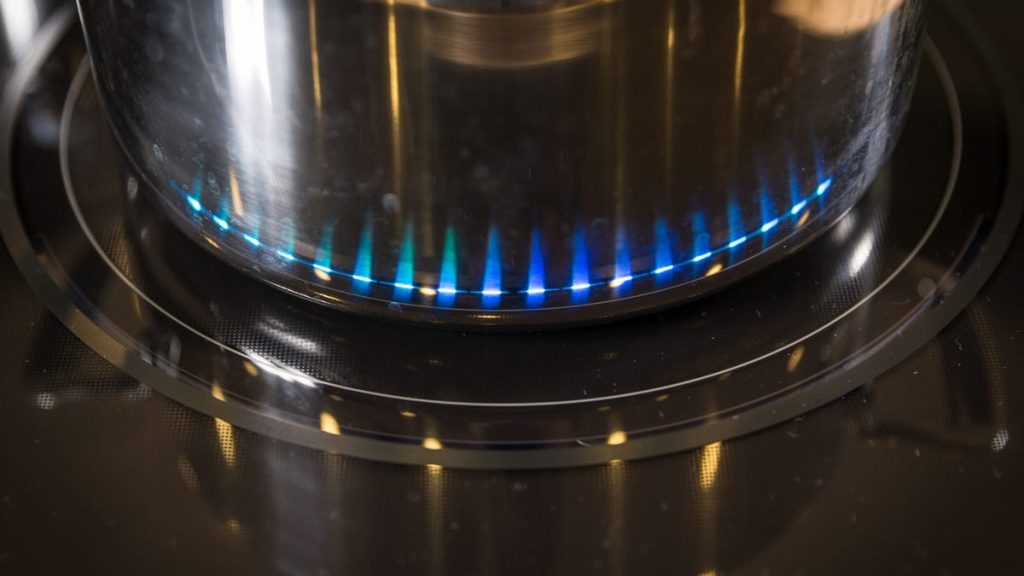The Inefficiency of Electric Stoves and the Rise of Induction Cooktops
For many home cooks, the slow process of waiting for a pot of water to boil on an electric stove is a familiar frustration, often compared to the tediousness of watching paint dry. Traditional electric stoves, with their old-fashioned heating coils, are known to be slow and inefficient. This inefficiency has led many cooks to explore alternative cooking methods, such as gas stoves, even though gas comes with its own set of challenges, including potential health hazards from burning fossil fuels indoors.
However, electric cooking is getting a significant upgrade with the growing popularity of induction cooktops. Unlike traditional electric stoves, which rely on metal coils to transfer heat to cookware, induction cooktops use magnetic energy to heat up the pots and pans directly. This technology offers several advantages, including faster cooking times, improved energy efficiency, and enhanced safety. For home cooks looking to modernize their cooking experience, induction cooktops are proving to be a game-changer.
How Induction Cooktops Work: A Closer Look
To understand the benefits of induction cooktops, it’s helpful to compare how they work to traditional electric cooktops. Electric cooktops heat cookware through a process called conduction. Electric current flows through metal coils under the cooktop surface, causing them to heat up. This heat is then transferred to the cookware either directly, in the case of exposed coils, or through a glass or ceramic surface that conducts the heat. While effective, this method can be slow and uneven, often resulting in hotspots and wasted energy.
Induction cooktops, on the other hand, use electromagnetic induction to heat cookware. When you place a pot or pan made of ferromagnetic material, such as stainless steel or cast iron, on the cooktop, an alternating magnetic field is generated beneath the surface. This magnetic field induces electrical currents in the cookware, causing the metal to heat up directly. This process is not only faster but also more energy-efficient, as the heat is transferred directly to the cookware rather than being lost to the surrounding air or cooktop surface.
The Pros of Induction Cooktops: Speed, Efficiency, and Safety
The advantages of induction cooktops are numerous. For one, they are significantly faster than traditional electric stoves. Induction cooktops can bring water to a boil in about half the time it takes for gas stoves to achieve the same result. In fact, some high-end models, such as the Copper Charlie induction stove, can boil water in as little as 30 seconds. This speed makes induction cooktops ideal for busy home cooks who need to get meals on the table quickly.
Another major benefit of induction cooktops is their energy efficiency. Unlike traditional electric stoves, which waste a significant amount of energy as heat is transferred through the burners and cooktop surface, induction cooktops deliver up to 90% of their electromagnetic energy directly to the cookware. This means less energy is lost to the environment, making induction cooking not only faster but also more eco-friendly. Additionally, the surface of an induction cooktop remains relatively cool to the touch, except for the residual heat from the cookware itself. This reduces the risk of burns and makes cleaning up spills easier, as food doesn’t cook onto the surface.
Finally, induction cooktops are incredibly safe. Because they only heat up when a compatible pot or pan is placed on the cooking surface, there’s no need to worry about accidentally leaving a burner on. This makes them a great option for households with children or pets.
The Cons of Induction Cooktops: Cost and Compatibility Issues
Despite their many advantages, induction cooktops are not without their drawbacks. One of the most significant obstacles for many home cooks is the cost. Induction cooktops are generally more expensive than their traditional electric counterparts. While basic models can start around $1,000, high-end models, like the aforementioned Copper Charlie induction stove, can cost upwards of $6,000. Additionally, induction cooktops often require a 240-volt outlet to function, which may not be standard in all kitchens. If you’re switching from a gas stove, you might need to hire an electrician to install the necessary electrical infrastructure, adding to the overall cost.
Another potential downside of induction cooktops is the need for compatible cookware. Induction cooking only works with ferromagnetic materials, such as stainless steel, cast iron, and carbon steel. Pots and pans made of materials like aluminum or copper are not compatible and will not heat up on an induction cooktop. While some cookware sets may be labeled as "induction-ready," it’s important to verify compatibility before making a purchase. A quick magnet test can help determine if your existing cookware will work on an induction cooktop: if a magnet sticks to the bottom of the pan, it’s good to go.
For those who are unsure about switching to induction or who are on a tight budget, a portable induction burner is a more affordable option. These compact units can be purchased for under $100 and offer a convenient way to try out induction cooking without committing to a full cooktop replacement.
The Pros and Cons of Electric Cooktops: A Balanced Perspective
While induction cooktops offer a modern, high-tech alternative to traditional electric cooking, there are still many reasons why electric cooktops remain a popular choice. For one, electric cooktops are simple and reliable. With fewer moving parts and no complex electromagnetic technology, they are less likely to break down and require less maintenance. Plus, their straightforward design means there’s no steep learning curve for new users.
Another advantage of electric cooktops is their ability to utilize residual heat. After turning off a burner, the cooktop surface remains warm for a while, allowing you to keep food warm or complete the final stages of cooking. This residual heat can be particularly useful for certain types of dishes, such as simmering sauces or keeping rice warm. Additionally, electric cooktops are generally more affordable than induction cooktops, both in terms of initial purchase price and installation costs.
However, electric cooktops also have their downsides. The residual heat that can be so useful for keeping food warm can also pose a safety hazard. The cooktop surface can remain hot long after the burners are turned off, increasing the risk of accidental burns if someone touches the surface or places a flammable item on it. Furthermore, electric cooktops can be slower to heat up and may provide uneven heat distribution, especially when using smaller pans on larger burners. This inefficiency can lead to wasted energy and a less-than-optimal cooking experience.
Different Strokes for Different Folks: Choosing the Right Cooktop for Your Needs
When it comes to deciding between an induction cooktop and a traditional electric cooktop, there’s no one-size-fits-all solution. The best choice for you will depend on your specific needs, preferences, and circumstances. If speed, energy efficiency, and safety are your top priorities, an induction cooktop might be worth the investment, even if it means paying a higher upfront cost. On the other hand, if you’re working with a tight budget and need a reliable, no-frills cooking solution, a traditional electric cooktop could be the better option.
Another factor to consider is how much you value convenience and flexibility. Induction cooktops not only offer faster cooking times but also easier cleanup and enhanced safety features. However, they require compatible cookware and a more substantial investment. Electric cooktops, while less efficient and slower, are more versatile in terms of what cookware you can use and are generally easier on the wallet.
If you’re still unsure, it’s worth trying out both options before making a decision. Many retailers and appliance stores offer live demonstrations, or you could try using a friend’s or family member’s cooktop to see which one feels more comfortable and intuitive for you. At the end of the day, the right cooktop for you is the one that makes cooking easier, faster, and more enjoyable, regardless of the technology behind it.
Wrapping Up: The Future of Stovetop Cooking
The world of stovetop cooking is evolving rapidly, with induction cooktops leading the charge toward a more efficient and technologically advanced kitchen. While traditional electric cooktops still have their place, induction cooking offers a compelling alternative for those looking to modernize their cooking experience. As technology continues to improve and prices come down, induction cooktops are likely to become even more mainstream, offering home cooks a faster, safer, and more eco-friendly way to prepare meals.
Ultimately, whether you choose an induction cooktop, a traditional electric cooktop, or even a gas range, the most important thing is to have a cooking surface that inspires you to create delicious meals for yourself and your loved ones. Remember, the perfect cooktop is one that combines functionality, efficiency, and ease of use, allowing you to focus on what really matters: the food.












